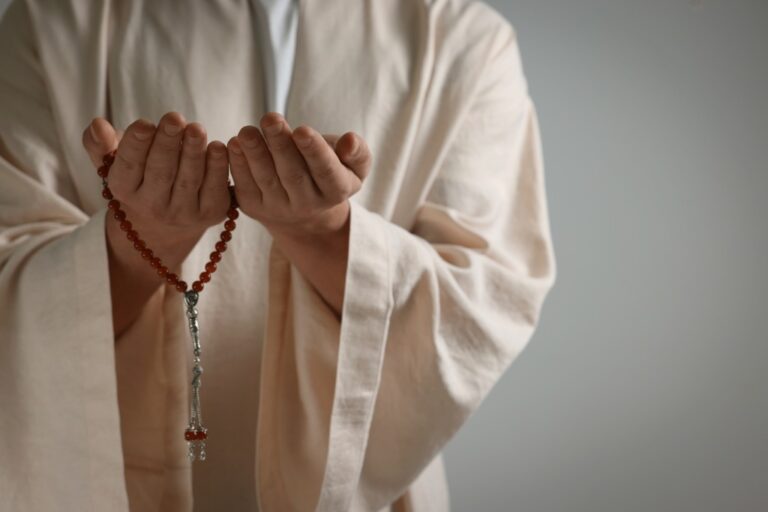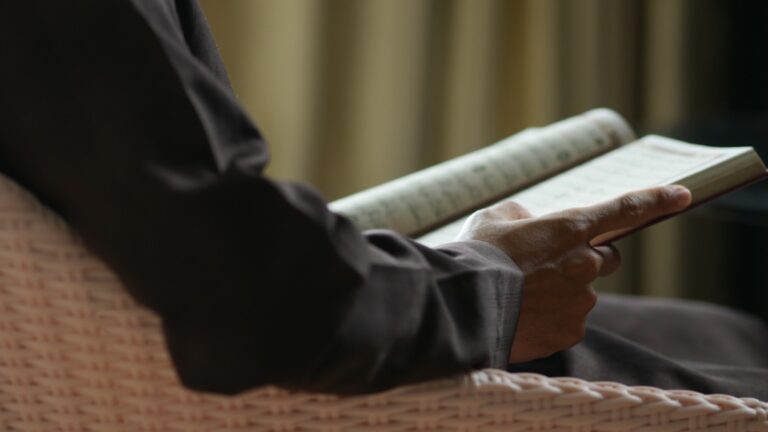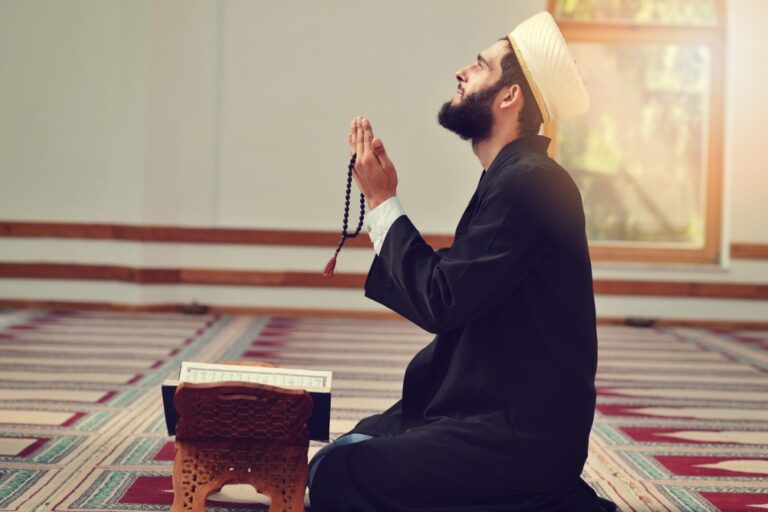How to Perform Taraweeh Prayer
Have you ever wondered why Muslims pray 8 or 20 rakats after Isha in congregation during the blessed month of Ramadan?
Those are voluntary prayers known as “Taraweeh,” which carry immense rewards.
But many of us are unaware of the historical and spiritual values of Taraweeh, so in this article, we will discuss everything about this special prayer with authentic references.
Without further ado, let’s begin!
Understanding Taraweeh Prayer
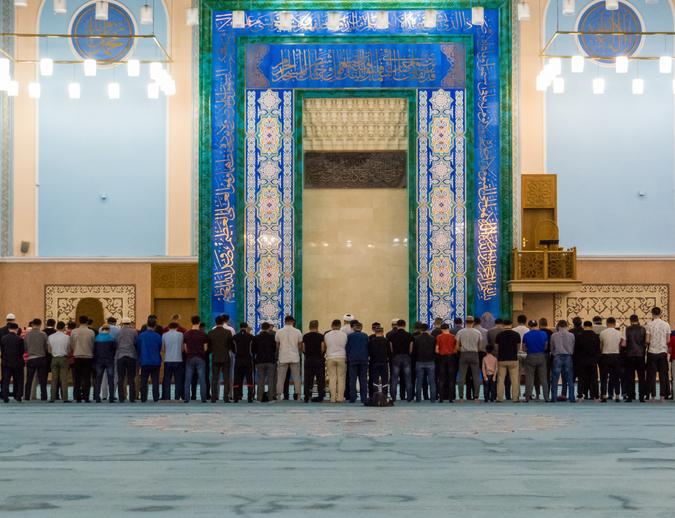

Taraweeh prayer is a voluntary night prayer performed during the holy month of Ramadan.
Definition of Taraweeh
Taraweeh refers to a particular form of voluntary night prayer performed exclusively during the holy month of Ramadan. The term “Taraweeh” is an Arabic word that means to rest and relax, as it’s customary for worshippers to rest after performing every two units (Rak’at) of this prayer.
Those who perform Taraweeh with faith and hope for rewards are believed to have their past sins forgiven. Taraweeh is an additional prayer observed after Salat-Al-Isha during Ramadan, following the traditions of Prophet Muhammad (PBUH). It adds to the spiritual environment during Ramadan nights for Muslims worldwide.
Although it’s often done in groups at mosques, Taraweeh is an optional prayer. You can also pray privately at home, alone, or with your family members. The important thing is to engage in this special prayer with sincerity and devotion, seeking Allah SWT’s blessings and forgiveness.
The Origin and Significance of Taraweeh
Taraweeh prayer is integral to Muslims’ spiritual routines during the holy month of Ramadan. Its origins can be traced back to Prophet Muhammad’s (PBUH) practice, establishing it as a necessary Sunnah for believers.
Prophet Muhammad PBUH once led the congregation in Taraweeh for a few days in a row, but then he stopped, and when asked why, he said:
“I was inclined to think that it (prayer) might not become obligatory for you. So you must observe prayer (optional) in your houses, for the prayer observed by a man in the house is better except an obligatory prayer.”
That is why Muslims performed Taraweeh in smaller groups until the second Caliph, Umar ibn Al-Khattab, gathered people under one Imam to ensure unity within the Muslim Ummah.
Its significance goes beyond mere ritualistic observation; it is a night-time meditation that fosters more profound connections with Allah SWT through Qur’anic recitation and intense supplication.
This non-obligatory but highly encouraged prayer is performed every night after Salat-Al-Isha and before dawn for Fajr. It improves spiritual mindfulness and endurance among Muslims.
The Structure of Taraweeh Prayer
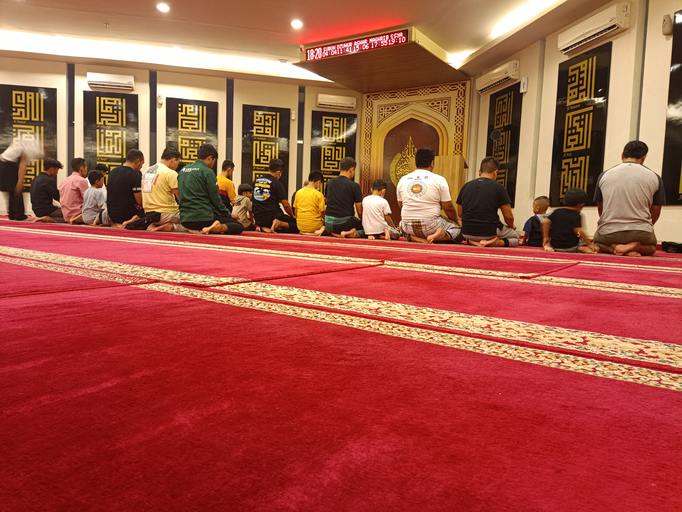

Taraweeh prayer consists of a specific structure, including the number of rak’ats, the time for performance, and the step-by-step procedure.
The Number of Rak’ats in Taraweeh
Taraweeh prayer consists of a specific number of rak’ats or units of prayer. The number varies, with different narrations claiming it can be 8 or 20 rak’ats. However, most imams in masjids follow the general practice of praying 20 rak’ats for Taraweeh.
The number of Rakat in Taraweeh is always a source of contention among various schools of thought. Each set of two rak’ats is performed similar to everyday voluntary prayer. It is important to note that during Taraweeh, there are breaks every four rak’ats, allowing worshippers to rest before continuing their prayers.
The Time for Performing Taraweeh
You can perform the Taraweeh prayer at night after the obligatory Isha prayer and before Fajr starts, which means it’s usually prayed in the late evening or early morning hours.
It’s a good idea to take a short break after the Isha prayer before starting Taraweeh to get ready and rest. Many mosques hold congregational Taraweeh prayers right after Isha, so you can gather with other Muslims and worship together during Ramadan nights.
But remember, you can also pray Taraweeh at home, alone or with your family. The flexibility in timing allows you to adjust your schedule based on your circumstances while still fulfilling this important act of worship during Ramadan.
The Procedure for Taraweeh Prayer, Step by Step
Taraweeh prayer is performed in sets of two rak’at and can be done at the mosque or at home.
Here is a step-by-step guide on how to perform the Taraweeh prayer:
- Begin by making the intention (niyyah) for Taraweeh prayer, silently or aloud.
- Start with Takbiratul Ihram, saying “Allahu Akbar” to begin the prayer. Raise your hands to above shoulder level (or earlobes) while saying the takbir.
- Start your Salat with Dua of Istiftah: سُبْحَانَكَ اللّٰهُمَّ وَبِحَمْدِكَ ، وَتَبَارَكَ اسْمُكَ ، وَتَعَالَىٰ جَدُّكَ ، وَلَا إِلٰهَ غَيْرُكَ : ‘SubhanakAllahumma, wa bihamdika tabarakasmuka wa ta’ala jadduka wa la ilaha ghairuk (Glory and praise be to You, O Allah SWT. Blessed be Your name and exalted be Your majesty, there is none worthy of worship except You.)” (it is only recited in the first Rakat). (Reference: Sunan an-Nasa’i 900)
- Recite Surah Al-Fatihah, after completing Takbiratul Ihram. Book 2, Hadith 172
- Continue by reciting another portion of the Quran, such as Surahs from Juz Amma or any other part you prefer. You can also choose to recite more extended portions if you are confident. Sahih Muslim 396c.
- Now, you may perform the rest of the steps of ruku, sujood, and tashahud like in the other Salat.
- After completing two rak’at, take a short break and rest briefly before beginning the next set.
- Repeat steps 2 – 6 for each subsequent set of two rak’at until you have completed your desired number of rak’at for Taraweeh prayer.
- End the Taraweeh prayer by performing the Witr prayer, which consists of three, five, seven, or nine rak’at. The Witr prayer is performed separately after finishing all the recommended rak’at for Taraweeh.
- After completing the Witr prayer, Praise Allah SWT and then make Dua for yourself, your loved ones, and Muslims worldwide.
If you are praying in congregation, at your masjid, then follow the lead of the Imam.
The Rewards of Praying Taraweeh
According to a hadith, when you participate in Taraweeh prayers during Ramadan with strong faith (Iman) and hopeful anticipation of divine rewards, you can have all your previous sins forgiven.
“ مَنْ قَامَ رَمَضَانَ إِيمَانًا وَاحْتِسَابًا غُفِرَ لَهُ مَا تَقَدَّمَ مِنْ ذَنْبِهِ ”
“Whoever prayed at night the whole month of Ramadan out of sincere Faith and hoping for a reward from Allah, then all his previous sins will be forgiven.”
Physical Benefits of Taraweeh
Research suggests that participating in Taraweeh prayers, especially in congregation, visibly improves one’s physical fitness and emotional health while enhancing muscle strength.
So whether you pray at home or join Jama’ah at local Masjids for congregational prayer, every Rak’at manifests rich blessings and bounty from Allah SWT.
Special Considerations for Taraweeh Prayer


Most scholars agree that holding a Qur’an during Taraweeh, including digital copies, is permissible. However, it is disliked to do so in the obligatory prayers.
Recitation of the Whole Qur’an During Taraweeh
In many mosques, reciting the entire Qur’an during Taraweeh prayer throughout Ramadan is common. By the end of the month, you will have heard the entire Qur’an during Taraweeh.
This is a beautiful way to connect with Allah SWT’s words and seek blessings throughout Ramadan. Mosques usually recite one part (Juz) each night so that everyone can finish the Qur’an by the end of Ramadan.
If you regularly attend Taraweeh, you will feel a sense of accomplishment and fulfillment because of this. This tradition makes each night’s prayer during Ramadan special, whether you pray at home or in a congregation.
Ruling On Leading the Taraweeh Prayer at Home for Women
Women can lead Taraweeh prayers at home, either in the congregation or alone. According to Islamic scholars, women can serve as Imams during these prayers in the privacy of their homes.
This enables them to participate in and lead their spiritual practice during Ramadan actively. Women who lead Taraweeh prayers at home must maintain proper decorum and follow prayer etiquette guidelines.
Women can create a meaningful and fulfilling worship experience that aligns with their devotion and connection to Allah SWT by leading Taraweeh.
Taraweeh Prayer and Dua
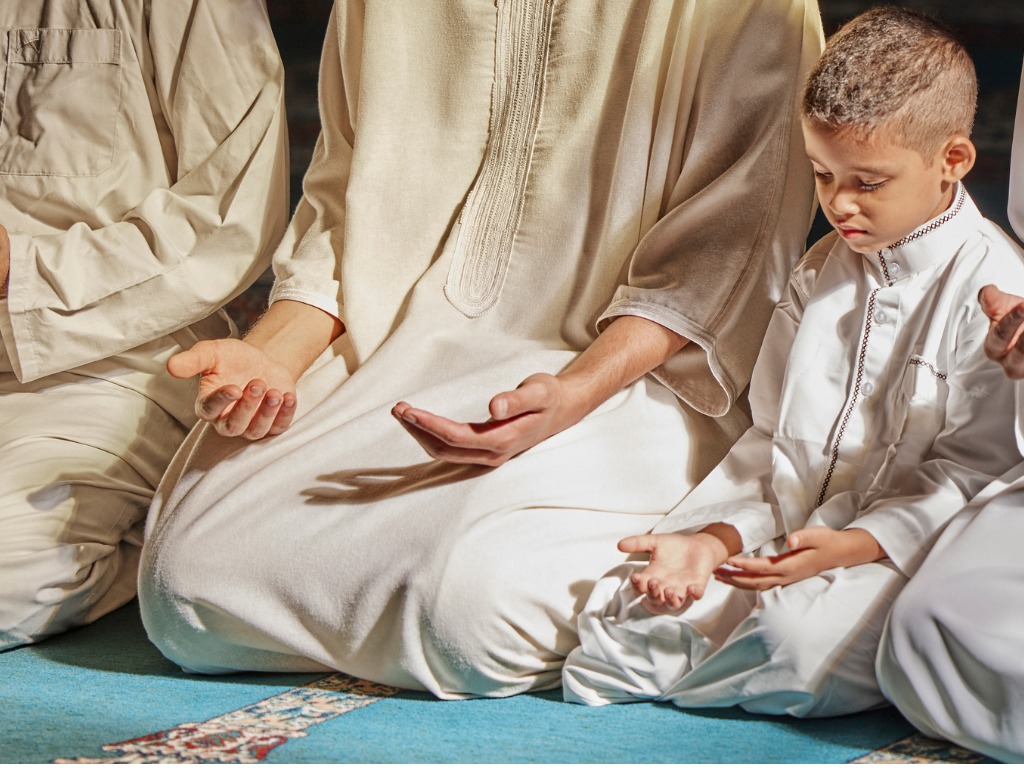

During Taraweeh prayer, it is essential to understand the significance of Dua and its role in creating a deeper connection with Allah SWT.
Dua During Taraweeh Prayer
During Taraweeh prayer, it’s strongly recommended that you engage in Dua or supplication because it’s a time when your prayers are more likely to be accepted. You have an excellent opportunity to express your feelings to Allah SWT and ask for His forgiveness, guidance, and blessings.
You can make Dua in any language, either silently or aloud. Your supplications can include personal requests for yourself and your loved ones and broader prayers for the Muslim community (Ummah) and the world.
When you make Dua during Taraweeh, it’s crucial to remember two essential things: sincerity and complete trust in Allah SWT’s mercy.
Taraweeh During Laylat-ul-Qadr
Taraweeh prayer is considered as Qiyam al-layl, and its rewards increase manifold when you perform it during the nights of Laylat-ul-Qadr since Allah SWT has declared the worship during this time equal to 1000 months.
لَيْلَةُ ٱلْقَدْرِ خَيْرٌۭ مِّنْ أَلْفِ شَهْرٍۢ
The Night of Glory is better than a thousand months. (97:3)
So brothers and sisters, please do everything you can to capitalize on this magnificent opportunity!
Tips for Enhancing Your Taraweeh Experience
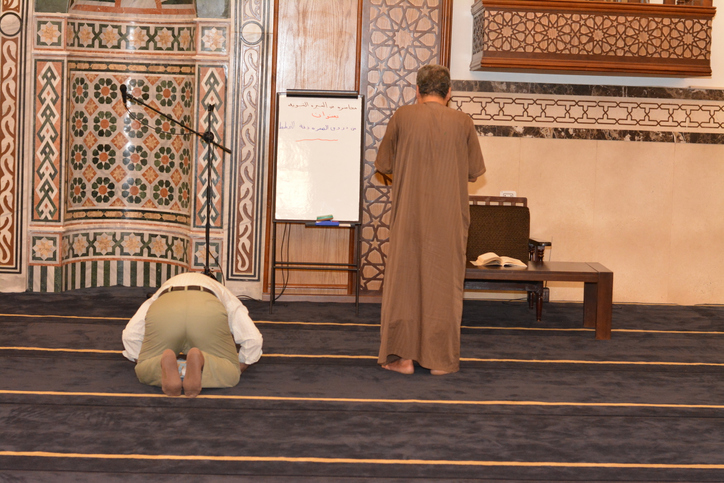

Maximize your Taraweeh experience with these practical tips that will help you stay focused, spiritually connected, and full of devotion throughout the night prayers. Read on to discover how you can elevate your worship during this blessed month of Ramadan.
Preparing Mentally and Physically for Taraweeh
Preparing for Taraweeh requires both mental and physical readiness. Here are some tips to help you prepare:
- Set a positive intention: Before starting Taraweeh, remember its great rewards. Remember that you want to please Allah SWT.
- Clear your mind: Take a few moments to mentally prepare yourself before starting Taraweeh. Let go of any distractions or worries and focus on the purpose of this prayer.
- Seek knowledge: Increase your understanding of Taraweeh by learning its significance, rewards, and proper procedure. This will keep you focused during prayer.
- Get enough rest: Get sufficient sleep during Ramadan to maintain your energy levels for Taraweeh. This lets you pray attentively.
- Stay hydrated: Take a water bottle to the masjid to avoid dehydration since your body gets dehydrated during fasting, so it’s better to keep it hydrated.
- Eat nourishing meals: Consume balanced meals during iftar. Include complex carbohydrates, protein, fruits, and vegetables in your pre-Taraweeh meals to keep yourself physically strong.
- Dress comfortably: Wear loose-fitting, air-permeable clothing. Comfortable clothing lets you focus on prayer.
- Perform ablution (wudu): Start Taraweeh after proper wudu. Ablution prepares the body and mind for prayer.
Incorporating Duas and Azkar
During breaks in Taraweeh prayer, it’s highly recommended that you engage in Zikir, the remembrance of Allah SWT, to enhance your spiritual experience. You can do this by reciting various phrases such as “SubhanAllah” (Glory be to Allah SWT), “Alhamdulillah” (Praise be to Allah SWT), and “Allahu Akbar” (Allah SWT is the Greatest).
You can follow the general formula that Prophet Muhammad PBUH told us: recite Subhan-Allah SWT 33 times, Alhumdulillah 33 times, and Allahu Akbar 34 times. Riyad as-Salihin 1420
Individuals can focus their minds on the divine presence by using these simple yet powerful expressions of praise and gratitude. Furthermore, engaging in heartfelt supplications during Taraweeh allows worshippers to express their deepest desires to Allah SWT, seeking forgiveness, guidance, and blessings.
Adding Dua and Azkar to the Taraweeh prayer adds depth and reverence, making it a truly transformative experience.
Conclusion
During the holy month of Ramadan, Taraweeh prayer is a beautiful and rewarding act of worship. To have a fulfilling Taraweeh experience, it’s essential to understand its structure, consider some unique aspects, and use helpful tips.
Whether praying at the mosque or at home, remember to approach this voluntary night prayer with sincere intention and devotion. Your dedication to worship during this blessed month will make you closer to Allah SWT and grant you spiritual growth.
May Allah SWT accept our prayers and bless us abundantly during this holy month of Ramadan!
FAQs
What is the Taraweeh prayer, and when is it performed?
Taraweeh prayer refers to the additional prayers offered after the Isha prayer during Ramadan. It is usually performed in a congregation, or alone, and consists of 8 or 20 rakats of prayer.
Can Taraweeh be performed at home instead of going to a mosque?
Taraweeh can be performed at home alone or in congregation with family members. However, if possible, attend congregational prayers at a mosque because praying together has additional spiritual benefits.
Is there a specific number of units for Taraweeh prayer?
The number of units for Taraweeh prayer varies according to Islamic traditions and practices. The most common method is performing 8 or 20 rakats of Taraweeh at night. It is best to seek guidance from your local mosque or Islamic scholar on how many rakats are recommended in your community’s practice.
كيفية أداء صلاة التراويح
هل تساءلت يومًا لماذا يصلي المسلمون 8 أو 20 ركعة بعد العشاء في الجماعة خلال شهر رمضان المبارك؟
وهي صلوات التطوع المعروفة بـ "التراويح" ولها أجر عظيم.
لكن الكثير منا يجهل القيم التاريخية والروحية للتراويح، لذلك في هذا المقال سنناقش كل ما يتعلق بهذه الصلاة الخاصة بمراجع موثوقة.
بدون مزيد من اللغط، فلنبدأ!
فهم صلاة التراويح


صلاة التراويح هي صلاة ليلية تطوعا تؤدى خلال شهر رمضان المبارك.
تعريف التراويح
التراويح تشير إلى شكل معين من أشكال صلاة الليل التطوعية تُقام حصريًا خلال شهر رمضان المبارك. ولفظ "التراويح" كلمة عربية تعني الاستراحة، حيث جرت العادة أن يستريح المصلون بعد أداء كل ركعتين من هذه الصلاة.
يعتقد أن أولئك الذين يؤدون صلاة التراويح بإيمان وأمل قد غفرت لهم خطاياهم السابقة. التراويح هي صلاة إضافية تُقام بعد صلاة العشاء في شهر رمضان، عملاً بسنة النبي محمد (صلى الله عليه وسلم). فهو يضيف إلى البيئة الروحية خلال ليالي رمضان للمسلمين في جميع أنحاء العالم.
على الرغم من أنها تتم في كثير من الأحيان في مجموعات في المساجد، إلا أن صلاة التراويح هي صلاة اختيارية. يمكنك أيضًا أن تصلي بشكل خاص في المنزل، بمفردك، أو مع أفراد عائلتك. المهم هو الانخراط في هذه الصلاة الخاصة بإخلاص وإخلاص، طالبين البركات والمغفرة من الله سبحانه وتعالى.
أصل التراويح وأهميتها
صلاة التراويح جزء لا يتجزأ من الروتين الروحي للمسلمين خلال شهر رمضان المبارك. ويمكن إرجاع أصولها إلى سنة النبي محمد (صلى الله عليه وسلم)، وجعلها سنة ضرورية للمؤمنين.
أم النبي محمد صلى الله عليه وسلم الجماعة ذات مرة في التراويح لعدة أيام متتالية، لكنه توقف، وعندما سئل عن السبب، قال:
"كنت أميل إلى الظن أنها قد لا تكون واجبة عليك. فعليكم بالصلاة في بيوتكم، فإن صلاة الرجل في البيت أفضل إلا الصلاة المكتوبة.
ولهذا السبب أدى المسلمون صلاة التراويح في مجموعات أصغر حتى جمع الخليفة الثاني عمر بن الخطاب الناس تحت إمام واحد لضمان الوحدة داخل الأمة الإسلامية.
إن أهميتها تتجاوز مجرد الملاحظة الشعائرية؛ إنه تأمل ليلي يعزز الروابط العميقة مع الله سبحانه وتعالى من خلال تلاوة القرآن والدعاء المكثف.
يتم أداء هذه الصلاة غير الإلزامية ولكن المشجعة بشدة كل ليلة بعد صلاة العشاء وقبل الفجر للفجر. إنه يحسن اليقظة الروحية والتحمل بين المسلمين.
بنية صلاة التراويح


تتكون صلاة التراويح من بنية محددة، بما في ذلك عدد الركعات، ووقت الأداء، وإجراءاتها خطوة بخطوة.
عدد ركعات التراويح
تتكون صلاة التراويح من عدد محدد من ركعات أو وحدات الصلاة. ويختلف العدد، حيث اختلفت الروايات في أنها قد تكون 8 أو 20 ركعة. ومع ذلك، فإن معظم أئمة المساجد يتبعون الممارسة العامة المتمثلة في صلاة التراويح 20 ركعة.
إن عدد ركعات التراويح دائمًا ما يكون موضع خلاف بين المذاهب المختلفة. يتم أداء كل مجموعة من ركعتين بشكل مشابه للصلاة التطوعية اليومية. ومن المهم الإشارة إلى أنه خلال صلاة التراويح هناك فترات راحة كل أربع ركعات، مما يسمح للمصلين بالاستراحة قبل مواصلة صلاتهم.
وقت صلاة التراويح
يمكنك أداء صلاة التراويح ليلا بعد صلاة العشاء المفروضة وقبل طلوع الفجر، أي أنها تصلى عادة في أواخر المساء أو في ساعات الصباح الباكر.
من الجيد أن تأخذ استراحة قصيرة بعد صلاة العشاء قبل بدء صلاة التراويح للاستعداد والراحة. تقيم العديد من المساجد صلاة التراويح جماعة بعد العشاء مباشرة، حتى تتمكن من الاجتماع مع المسلمين الآخرين والعبادة معًا خلال ليالي رمضان.
ولكن تذكر أنه يمكنك أيضًا صلاة التراويح في المنزل بمفردك أو مع عائلتك. تتيح لك المرونة في التوقيت تعديل جدولك الزمني بناءً على ظروفك مع الاستمرار في أداء هذه العبادة المهمة خلال شهر رمضان.
إجراء صلاة التراويح خطوة بخطوة
تقام صلاة التراويح ركعتين في المسجد أو في المنزل.
إليك دليل خطوة بخطوة حول كيفية أداء صلاة التراويح:
- ابدأ بنيّة صلاة التراويح سرًا أو جهرًا.
- ابدأ بتكبيرة الإحرام بقول "الله أكبر" لبدء الصلاة. ارفع يديك إلى مستوى أعلى من مستوى الكتفين (أو شحمة الأذن) أثناء التكبير.
- ابدأ صلاتك بدعاء الاستفتاح: سُبْحَانَكَ اللَّهُم وَبِحَمْدِكَ ، وَتَبَارَكَ اسْمُكَ ، وَتَعَالَى جَدُّكَ ، وَلَا إِلَهَ غَيْرُكَ : 'سُبْحَانَكَ اللَّهِ وَبِحَمْدِكَ ، وَتَبَارَكَ اسْمُكَ ، وَتَعَالَى جَدُّكَ ، وَلَا إِلَهَ غَيْرُكَ : 'سُبْحَانَكَ اللَّهِ وَبِحَمْدِكَ ، وَتَبَارَكَ اسْمُكَ ، وَتَعَالَى جَدُّكَ ، وَلَا إِلَهَ غَيْرُكَ : 'سُبْحَانَكَ اللَّهُم وَبِحَمْدِكَ ، وَتَبَارَكَ اسْمُكَ ، وَتَعَالَى جَدُّكَ ، وَلَا إِلَهَ غَيْرُكَ أنت يا الله تبارك اسمك وتعالى جدك، لا إله إلا أنت)" (لا يقرأ إلا في الركعة الأولى). (المرجع: سنن النسائي 900)
- قراءة سورة الفاتحة بعد الانتهاء من تكبيرة الإحرام. الكتاب الثاني، الحديث 172
- استمر بتلاوة جزء آخر من القرآن، مثل سور من جزء عم أو أي جزء آخر تفضله. يمكنك أيضًا اختيار قراءة أجزاء أطول إذا كنت واثقًا من ذلك. صحيح مسلم 396ج.
- الآن، يمكنك أداء بقية خطوات الركوع والسجود والتشهد كما في الصلاة الأخرى.
- بعد الانتهاء من ركعتين، خذ استراحة قصيرة واستريح لفترة وجيزة قبل بدء المجموعة التالية.
- كرر الخطوات من 2 إلى 6 لكل مجموعة لاحقة من ركعتين حتى تكمل العدد المطلوب من ركعات صلاة التراويح.
- اختم صلاة التراويح بصلاة الوتر وهي ثلاث أو خمس أو سبع أو تسع ركعات. وتؤدى صلاة الوتر منفردة بعد الانتهاء من جميع ركعات التراويح المستحبة.
- بعد الانتهاء من صلاة الوتر، احمد الله سبحانه وتعالى ثم ادع لنفسك ولأحبائك وللمسلمين في جميع أنحاء العالم.
إذا كنت تصلي جماعة في مسجدك فاتبع إمامك.
فضل صلاة التراويح
وفقًا للحديث، عندما تشارك في صلاة التراويح خلال شهر رمضان بإيمان قوي وتوقع للمكافآت الإلهية، يمكنك أن تغفر لك جميع ذنوبك السابقة.
ص> " مَنْ قَامَ رَمَضَان إِيمَانًا وَاحْتِسَابًا غُفِرَ لَهُ مَا تَقَدَّمَ مِنْ ذَنْبِهِ "
"من قام شهر رمضان إيمانًا واحتسابًا غفر له ما تقدم من ذنبه."
الفوائد الجسدية للتراويح
تشير الأبحاث إلى أن المشاركة في صلاة التراويح، خاصة في الجماعة، يحسن اللياقة البدنية والصحة العاطفية بشكل واضح مع تعزيز قوة العضلات.
فسواء كنت تصلي في المنزل أو تنضم إلى الجماعة في المساجد المحلية لصلاة الجماعة، فإن كل ركعة تظهر نعمة غنية وفضلًا من الله سبحانه وتعالى.
اعتبارات خاصة بصلاة التراويح
أجمع أغلب العلماء على جواز حمل القرآن في التراويح، بما في ذلك النسخ الرقمية. لكن يكره ذلك في الصلوات المفروضة.
تلاوة القرآن كاملا في التراويح
في العديد من المساجد، من الشائع قراءة القرآن كاملاً أثناء صلاة التراويح طوال شهر رمضان. ومع نهاية الشهر ستكون قد سمعت القرآن كاملاً في التراويح.
هذه طريقة جميلة للتواصل مع كلام الله سبحانه وتعالى وطلب البركات طوال شهر رمضان. عادة ما تقرأ المساجد جزءًا واحدًا كل ليلة حتى يتمكن الجميع من ختم القرآن بنهاية شهر رمضان.
إذا كنت تحضر صلاة التراويح بانتظام، فستشعر بإحساس الإنجاز والإنجاز بسبب ذلك. وهذا التقليد يجعل صلاة كل ليلة في شهر رمضان مميزة، سواء كنت تصلي في المنزل أو في جماعة.
حكم القيادة صلاة التراويح في البيت للنساء
يمكن للمرأة أن تؤم صلاة التراويح في البيت، سواء مع الجماعة أو بمفردها. وبحسب علماء المسلمين، يمكن للنساء أن يقومن بالإمامة خلال هذه الصلوات في بيوتهن.
وهذا يتيح لهم المشاركة وقيادة ممارساتهم الروحية خلال شهر رمضان بنشاط. ويجب على النساء اللاتي يؤدين صلاة التراويح في المنزل أن يحافظن على اللياقة ويتبعن آداب الصلاة.
يمكن للمرأة أن تخلق تجربة عبادة هادفة ومرضية تتماشى مع إخلاصها واتصالها بالله سبحانه وتعالى من خلال قيادة التراويح.
صلاة التراويح ودعاءها


أثناء صلاة التراويح، من الضروري فهم أهمية الدعاء ودوره في خلق اتصال أعمق مع الله سبحانه وتعالى.
دعاء صلاة التراويح
أثناء صلاة التراويح، يُنصح بشدة أن تقوم بالدعاء أو الدعاء لأنه الوقت الذي تكون فيه صلاتك أكثر احتمالا لقبولها. لديك فرصة ممتازة للتعبير عن مشاعرك لله سبحانه وتعالى وطلب مغفرته وهدايته وبركاته.
يمكنك دعاء الدعاء بأي لغة، سواء بصمت أو بصوت عالٍ. يمكن أن تتضمن دعواتك طلبات شخصية لك ولأحبائك ودعوات أوسع للمجتمع الإسلامي (الأمة) والعالم.
عندما تدعو أثناء التراويح، من المهم أن تتذكر شيئين أساسيين: الإخلاص والثقة الكاملة في رحمة الله سبحانه وتعالى.
التراويح في ليلة القدر
صلاة التراويح تعتبر قيام الليل، ويتضاعف ثوابها عندما تؤديها في ليلة القدر لأن الله سبحانه وتعالى أعلن العبادة فيها الزمن يساوي 1000 شهر.
لَيْلَةُ الْقَدْرِ خَيْرٌۭ منْأَلْفِ شَهْرٍۢ
ليلة القدر خير من ألف شهر. (97:3)
لذا أيها الإخوة والأخوات، يرجى بذل كل ما في وسعكم للاستفادة من هذه الفرصة الرائعة!
نصائح لتحسين تجربة التراويح
حسّن تجربة التراويح إلى أقصى حد مع هذه النصائح العملية التي ستساعدك على البقاء مركزًا ومتصلًا روحيًا ومليئًا بالإخلاص طوال صلاة الليل. تابع القراءة لتكتشف كيف يمكنك الارتقاء بعبادتك خلال شهر رمضان المبارك.
الاستعداد النفسي والجسدي للتراويح
الاستعداد للتراويح يتطلب الاستعداد العقلي والجسدي. إليك بعض النصائح لمساعدتك في الاستعداد:
- ضع نية إيجابية: قبل البدء في صلاة التراويح، تذكر فوائدها العظيمة. تذكر أنك تريد إرضاء الله سبحانه وتعالى.
- صفي ذهنك: خذ بضع دقائق لتحضير نفسك ذهنيًا قبل البدء في صلاة التراويح. تخلص من أي انحرافات أو مخاوف وركز على الغرض من هذه الصلاة.
- اطلب العلم: زد من فهمك لصلاة التراويح من خلال التعرف على أهميتها وثوابها وإجراءاتها الصحيحة. وهذا سيجعلك تركز أثناء الصلاة.
- احصل على قسط كافٍ من الراحة: احصل على قسط كافٍ من النوم خلال شهر رمضان للحفاظ على مستويات الطاقة لديك أثناء صلاة التراويح. وهذا يتيح لك أن تصلي بانتباه.
- حافظ على رطوبة جسمك: خذ معك زجاجة ماء إلى المسجد لتجنب الجفاف لأن جسمك يصاب بالجفاف أثناء الصيام، لذا فمن الأفضل أن تحافظ على رطوبة الجسم.
- تناول وجبات مغذية: تناول وجبات متوازنة أثناء الإفطار. قم بتضمين الكربوهيدرات المعقدة والبروتين والفواكه والخضروات في وجبات ما قبل التراويح لتحافظ على قوتك البدنية.
- ارتداء ملابس مريحة: ارتدِ ملابس فضفاضة تسمح بمرور الهواء. الملابس المريحة تتيح لك التركيز على الصلاة.
- توضأ: ابدأ التراويح بعد الوضوء الصحيح. الوضوء يهيئ الجسم والعقل للصلاة.
دمج الأدعية والأذكار
خلال فترات الاستراحة في صلاة التراويح، يوصى بشدة أن تنخرط في الذكر، وهو ذكر الله سبحانه وتعالى، لتعزيز تجربتك الروحية. يمكنك القيام بذلك عن طريق قراءة عبارات مختلفة مثل "سبحان الله"، و"الحمد لله"، و"الله أكبر".
يمكنك اتباع الصيغة العامة التي أخبرنا بها النبي محمد صلى الله عليه وسلم: سبحان الله 33 مرة، والحمد لله 33 مرة، والله أكبر 34 مرة. رياض الصالحين 1420
يمكن للأفراد تركيز عقولهم على الحضور الإلهي باستخدام تعبيرات الثناء والامتنان البسيطة والقوية هذه. علاوة على ذلك، فإن الانخراط في الأدعية القلبية أثناء التراويح يسمح للمصلين بالتعبير عن أعمق رغباتهم إلى الله سبحانه وتعالى، وطلب المغفرة والهداية والبركات.
إن إضافة الدعاء والأذكار إلى صلاة التراويح يضيف عمقًا وخشوعًا، مما يجعلها تجربة تحويلية حقًا.
الاستنتاج
خلال شهر رمضان المبارك، تكون صلاة التراويح عبادة جميلة ومجزية. للحصول على تجربة التراويح المُرضية، من الضروري فهم هيكلها، والنظر في بعض الجوانب الفريدة، واستخدام النصائح المفيدة.
سواء كنت تصلي في المسجد أو في المنزل، تذكر أن تقترب من صلاة الليل هذه بنية صادقة وإخلاص. إن تفانيك في العبادة خلال هذا الشهر المبارك سيجعلك أقرب إلى الله سبحانه وتعالى ويمنحك النمو الروحي.
نسأل الله تعالى أن يتقبل دعاءنا ويبارك لنا في شهر رمضان المبارك!
الأسئلة الشائعة
ما هي صلاة التراويح ومتى تؤديها؟
صلاة التراويح هي الصلوات الإضافية التي تقام بعد صلاة العشاء في شهر رمضان. وعادة ما يتم أداؤها في جماعة، أو منفردة، وتتكون من 8 أو 20 ركعة من الصلاة.
هل يمكن أداء صلاة التراويح في المنزل بدلاً من الذهاب إلى المسجد؟
يمكن أداء صلاة التراويح في المنزل بمفردك أو مع أفراد الأسرة. ومع ذلك، إذا أمكن، احرص على حضور صلاة الجماعة في المسجد لأن الصلاة معًا لها فوائد روحية إضافية.
هل هناك عدد محدد لركعات صلاة التراويح؟
يختلف عدد ركعات صلاة التراويح حسب التقاليد والممارسات الإسلامية. الطريقة الأكثر شيوعًا هي أداء 8 أو 20 ركعة من التراويح في الليل. من الأفضل طلب التوجيه من مسجدك المحلي أو عالم إسلامي حول عدد الركعات الموصى بها في ممارسة مجتمعك.


